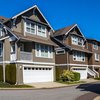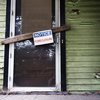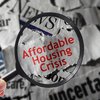How to Choose the Right Neighbourhood for Your Next Home

Aside from the brand new kitchen or the number of bedrooms in a house, the area you move to will have a significant impact on your daily life. Living in a great house but in an area that is inconvenient, or even not safe, can make you drained in the long term, both financially and emotionally. That is why taking the right neighbourhood into account, from security and how the kids will be educated to day-to-day life, is important for homebuyers across Canada.
This guide will explore different tips to keep in mind when searching for an ideal neighborhood, based on budget, lifestyle, future ambitions, and more.
Why Is Choosing the Right Neighbourhood Just as Important as Choosing the Home?
Picking the right house for your needs, but in the wrong neighbourhood, will almost always make it a poor investment. How much your home is worth, what your lifestyle is like, and the chance to sell it again in the future are all shaped by the location.
As the REMAX survey of Canadian homebuyers discovered, 80% believed the home's size was just as important as the house itself. Having high-quality schools that are up to par, crime-free neighborhoods, and access to shopping and transit all help create happiness for decades and increase property value.
“A neighbourhood can be built in a year or two, but it takes decades to change the character of the community. Smart buyers are as interested in the integrity of the community as they are in the design of kitchen cabinetry.”
— Rushi Parikh, Mortgage Agent Level 2, Clover Mortgage
What Are the Key Factors to Consider When Evaluating a Neighbourhood?
When evaluating where to live and which neighbourhood, consider the following essential factors:
| Factor | Why it Matters |
|---|---|
| Safety | Impacts personal security and resale value |
| Schools | Crucial for families, the education of children, and overall neighbourhood ranking |
| Cost of Living | Determines long-term affordability |
| Transportation | Affects commute times and daily convenience |
| Amentities | Supports lifestyle needs (shopping, healthcare, parks) |
| Future Development | Indicates growth potential and rising property values |
Using a simple checklist like the one above during your search can help you prioritize which factors are most important to you.
How Can You Research the Crime Rate and Safety of an Area?
Homebuyers typically state that safety is the first thing they seek when evaluating a neighbourhood and a home.
A good first step would be to visit local police websites or look at the crime statistics that have been published on the internet by the RCMP . With CrimeReports.ca , you can view interactive maps to see where and how often different crimes have been reported. Asking questions on local Facebook or Neighbourhood Watch pages may give a better indication of whether the destination place you are going to relocate to is safe.
Crime statistics have to differentiate the types of offense that they represent, the violent and non-violent being the chief categories. Even if there is some petty thieving in the locality, the community can still be robust and have low rates of serious crime.
What Role Do Schools and School Districts Play in Neighbourhood Desirability?
Wherever your family may move, the reputation of local schools contributes extensively to home values. It tends to be easier to sell and appreciate faster for homes near excellent schools.
The Fraser Institute School Rankings give an overall view of testing performance, trends, and school performance. Most families desire to be part of a particular school district that supports the local property market.
How Does Access to Amenities Influence Your Quality of Life?
Having amenities near your neighbourhood encourages a comfortable, healthier, and generally happier lifestyle. Pay attention to how far away you are from:
- Stores where you can buy groceries and things for your home
- Medical care is provided in health clinics and hospitals
- Sports facilities and public parks
- Coffee shops, restaurants, and places for entertainment
Young people who work may seek living spaces with easy access to places to walk and exciting nightlife. Key attributes for families may be places for kids to play, safe streets, and supermarkets close by. Have a look at Yelp and Google Maps to see what the neighborhood has to offer.
How Can You Assess the Long-Term Cost of Living in a Neighbourhood?
When being mindful of their budget, thoughtful home buyers pay attention to the mortgage but not to other costs, which can be different from area to area. Examples are property taxes, payments for homeowner insurance , the costs of utility bills (heating, water, and electricity), and local prices for buying groceries and fuel.
Minor differences in cost can grow large over time in places where local charges are rising or there are few service providers compared to others. Always ask for recent numbers on property taxes and average monthly bills for gas, electricity, and water when you are checking a new location. Considering such expenses regularly means there will be no unexpected expenses, and everyone can afford the area in the future.
What Makes a Neighbourhood Feel “Safe”?
A sense of security can be as valuable a factor in the selection of a neighbourhood as raw crime rates are. A good street light, a functioning neighbourhood watch, a visible police presence, and acceptable night-time noise are all part of the secure ambiance. But beyond the statistics, it's also a good idea to pay attention to the environment itself.
Stroll around the neighbourhood in the day and the evening. Look for signs of caring, such as clean sidewalks, neatly trimmed lawns, and neighbors standing outside talking, all signs of a healthy, responsible neighborhood. These less-than-noticeable signs can be a better measure of real safety than crime statistics.
How Do You Evaluate a Neighbourhood’s Future Potential?
Neighborhoods in the process of remaking or revitalizing can be wonderful investments for the long haul. Some of the most positive signs for the future are new construction, such as transit corridors or roadway expansion, new commercial construction or mixed-use projects, and seemingly flips or rehabbing of adjacent residential properties.
Check also what projects are in the works on your city's planning or zoning websites. While these signs might indicate rising values in the properties, watch out for rapid gentrification, which can have underlying costs or forced displacement of the neighborhood in the future.
What Lifestyle Questions Should You Ask Before Choosing a Neighbourhood?
Your lifestyle and personality also need to be a match for the type of neighborhood in which you settle. Start by asking yourself if you need a quiet, serene oasis or a vibrant, inner-city core. Even consider the long-term perspective: do you see yourself continuing to enjoy the atmosphere of the area in five or ten years?
Your lifestyle needs to be enabled by the culture of the neighborhood. For example, a professional, young couple would be attracted to similar neighbourhoods with evening culture and proximity to public transport, while older individuals would be attracted to quiet, walkability, and proximity to parklands and healthcare services. Your ideal neighborhood is a part of your life.
What Are the Three Strengths of a Good Neighbourhood?
All good neighbourhoods have three things in common: cleanliness, community, and access. Cleanliness can be found in the maintenance of the properties, clean streets, and trimmed public spaces, all signs of pride of ownership and shared responsibility.
Another key characteristic is a sense of community, with the understanding, neighborhood events and watching out for one another create a sense of emotional security and personal safety.
In addition, access refers to infrastructure providing residents with access to schools, employment, shopping, and public transport. Neighborhoods high in all three not only ensure a higher level of living but also stand up better in hard times, are attractive to a larger segment of prospective purchasers, and are a long-term investment.
How Do Local Bylaws and Zoning Affect Neighbourhood Character?
Zoning bylaws and municipal bylaws have a tremendous effect on the aesthetic, ambiance, and long-term livability of a neighborhood area. They regulate everything from noise restrictions and parking on the street to land use and building density. An example would be banning short-term rentals like Airbnb, limiting income generation, but also preserving residential quiet time.
Parking bylaws can limit the ease with which you can have visitors over, while density bylaws regulate new high-rise or multi-unit construction in the area next door. Familiarize yourself with the bylaws in your area in order to minimize day-to-day or house value surprises. Have your real estate agent outline the bylaws in place or consult your city's municipal code before purchasing your house.
What Tools and Apps Can Help You Evaluate a Neighbourhood Before Moving?
Homebuyers can now access a multitude of resources that simplify neighborhood searches. Google Street View allows you to view the streets virtually and gauge the tidiness and geometry of the neighborhood. Facebook groups are a forum for raw, unfiltered neighborhood talk about everyday neighborhood life, safety, and neighborhood tidbits.
WalkScore and TransitScore offer great feedback on the ease of getting around the neighborhood on foot, by public transport, or by bike. Real estate websites Redfin and Realtor.ca allow you to view listings, sales, and zoning information. With the integration of information-driven data and neighborhood feedback, you will have a better and clearer view of whether the neighborhood will meet your lifestyle and goals.
Conclusion: How Do You Know It’s the Right Neighbourhood for You?
In short, there is no one answer to finding the perfect home and neighborhood; however, using these tips and benchmarks above will certainly guide you in the right direction. From amenities, schools, safety, cost of living, and more, these are all important factors to consider. A thoughtful reflection of what you value, what is most important to your family, and more will allow you to navigate this process with precision and hopefully come out with the best result.
Contact us today at Clover Mortgage to get professional advice based on your needs to find the ideal neighborhood for you.
FAQs
What’s more important: the home or the neighbourhood?
The house and the amenities inside satisfy certain factors, but the neighborhood also holds quite some weight. Safety, lifestyle, and resale value impact the house price as well. There is no definitive answer, but both are closely related.
How do realtors help assess neighbourhood suitability?
Real estate agents bring valuable insight from previous clients and useful data on crime, school rankings, and more. All of this is consolidated with the realtor, who saves you a great deal of time and provides you with the best information to help you in this process.
Can a bad neighbourhood lower your property value?
Yes. Areas that are high in crime, low school rankings, and limited amenities and public transportation services will be lower in value, as they are less desirable for most people. This will ultimately lower the resale and property value of your home.





